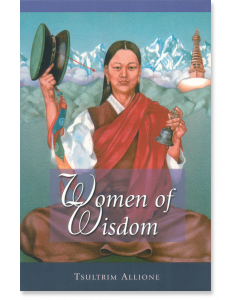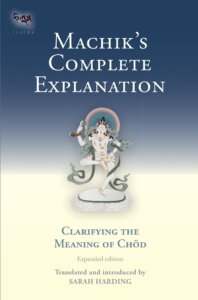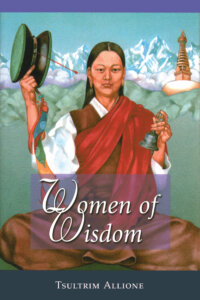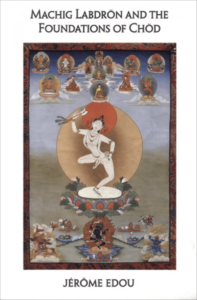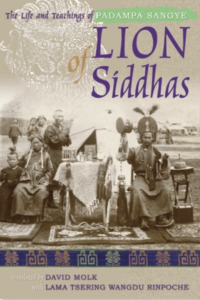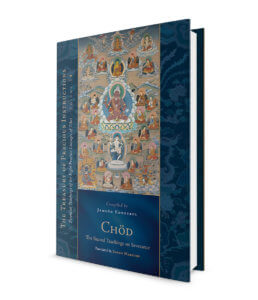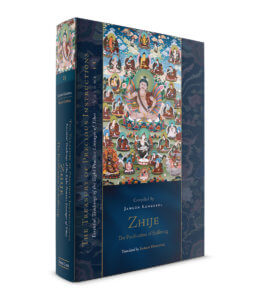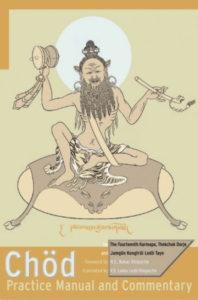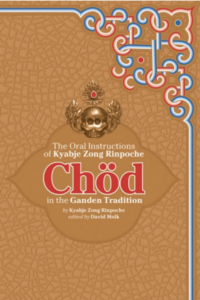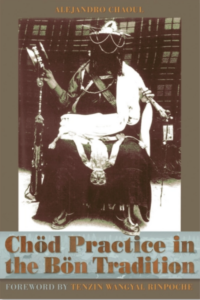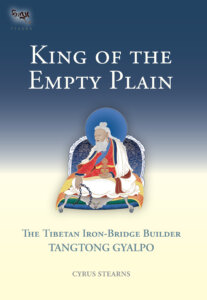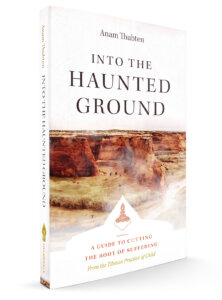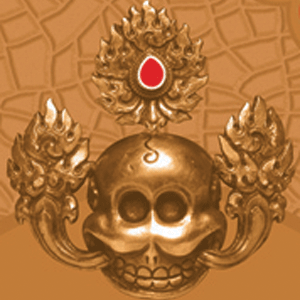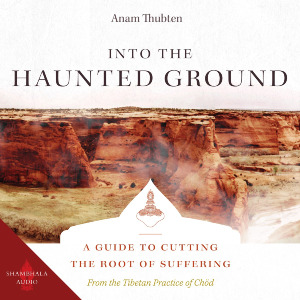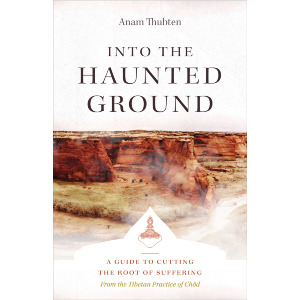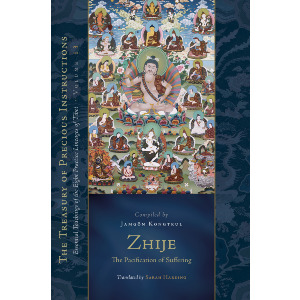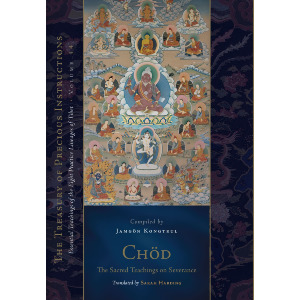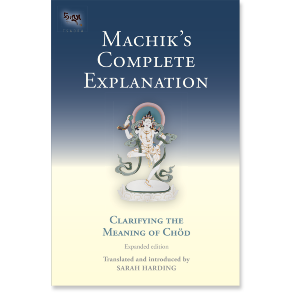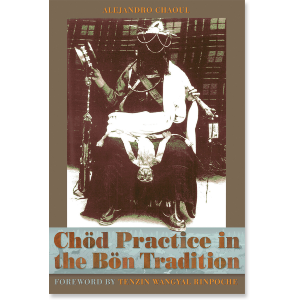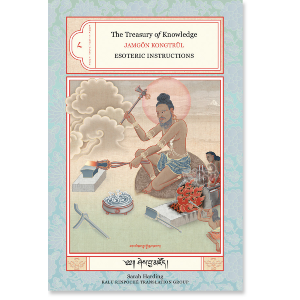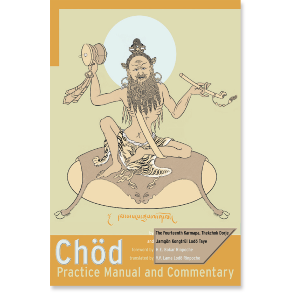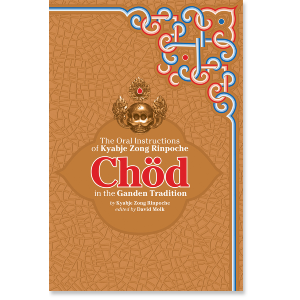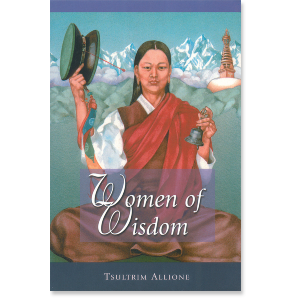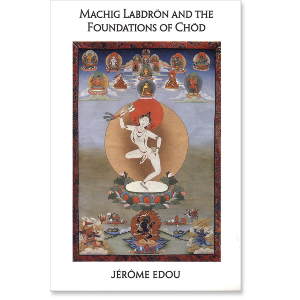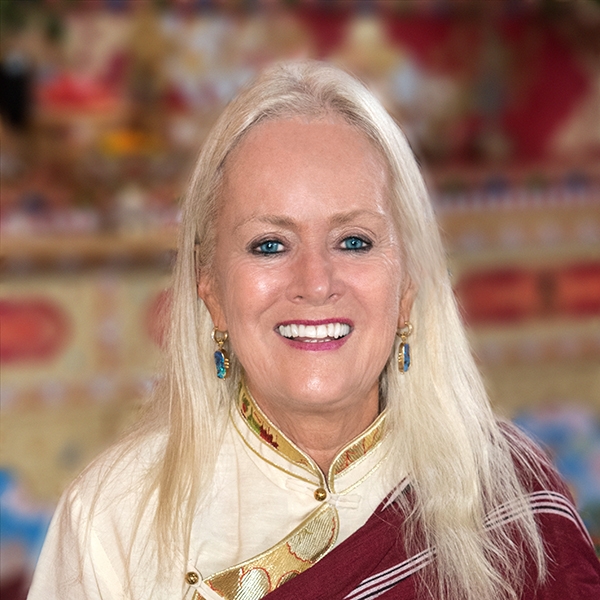

Tsultrim Allione
Lama Tsultrim Allione is an author, internationally known Buddhist teacher, and the founder and resident lama of Tara Mandala Retreat Center. She is the author of Women of Wisdom, the national best-seller Feeding Your Demons: Ancient Wisdom for Resolving Inner Conflict, which has been translated into seventeen languages, and Wisdom Rising: Journey into the Mandala of the Empowered Feminine. Born in New England to an academic and publishing family, Lama Tsultrim traveled to India in her late teens and in 1970, at the age of twenty-two, was ordained as a Tibetan Buddhist nun by H. H. the Sixteenth Karmapa. After four years living as a nun in the Himalayan region, she returned her monastic vows, married, and raised a family of three children. She has a master’s degree in Buddhist Studies/Women’s Studies from Antioch University. Her writings and teachings come from her sublime Tibetan lamas as well as her experience as a Western woman and mother. She is known for her ability to translate the wisdom of the ancient Tibetan Buddhist tradition into clear teachings that are relatable and relevant to Western audiences. Lama Tsultrim continues to guide Tara Mandala as the resident lama and thousands of students around the world. She was named Buddhist Woman of the Year in 2009 in Bangkok, Thailand.
Tara Mandala Retreat Center is a vibrant international Buddhist community centered on 700-acres in the San Juan Mountains near Pagosa Springs, CO. Under the spiritual direction of Lama Tsultrim, Tara Mandala hosts various group retreats each year and is home to numerous solo retreat cabins and a three-level Tara Temple, which celebrates the sacred feminine in the Buddhist tradition.
For more information on Lama Tsultrim Allione, you can watch the documentary on her life story “Feeding Your Demons” or visit the Tara Mandala website.
Tsultrim Allione
Lama Tsultrim Allione is an author, internationally known Buddhist teacher, and the founder and resident lama of Tara Mandala Retreat Center. She is the author of Women of Wisdom, the national best-seller Feeding Your Demons: Ancient Wisdom for Resolving Inner Conflict, which has been translated into seventeen languages, and Wisdom Rising: Journey into the Mandala of the Empowered Feminine. Born in New England to an academic and publishing family, Lama Tsultrim traveled to India in her late teens and in 1970, at the age of twenty-two, was ordained as a Tibetan Buddhist nun by H. H. the Sixteenth Karmapa. After four years living as a nun in the Himalayan region, she returned her monastic vows, married, and raised a family of three children. She has a master’s degree in Buddhist Studies/Women’s Studies from Antioch University. Her writings and teachings come from her sublime Tibetan lamas as well as her experience as a Western woman and mother. She is known for her ability to translate the wisdom of the ancient Tibetan Buddhist tradition into clear teachings that are relatable and relevant to Western audiences. Lama Tsultrim continues to guide Tara Mandala as the resident lama and thousands of students around the world. She was named Buddhist Woman of the Year in 2009 in Bangkok, Thailand.
Tara Mandala Retreat Center is a vibrant international Buddhist community centered on 700-acres in the San Juan Mountains near Pagosa Springs, CO. Under the spiritual direction of Lama Tsultrim, Tara Mandala hosts various group retreats each year and is home to numerous solo retreat cabins and a three-level Tara Temple, which celebrates the sacred feminine in the Buddhist tradition.
For more information on Lama Tsultrim Allione, you can watch the documentary on her life story “Feeding Your Demons” or visit the Tara Mandala website.
GUIDES
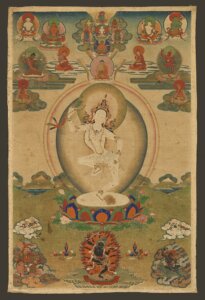
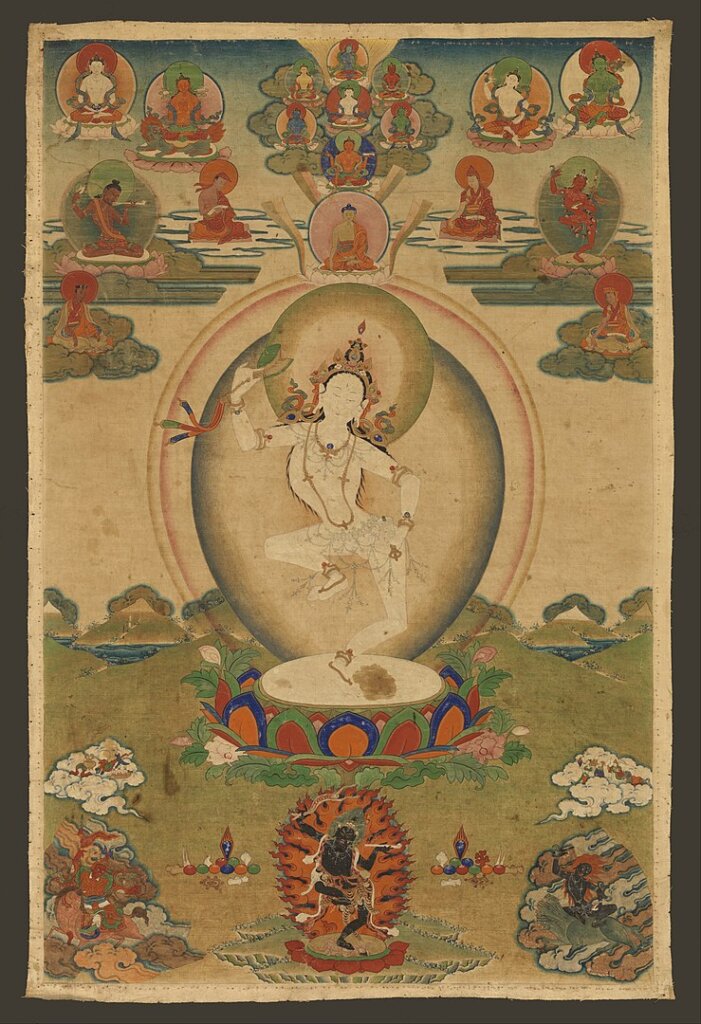
Chöd, often pronounced "chö," is a meditative practice found in both the Buddhist and Bön traditions of Tibet. Chöd, translated literally as "cutting through," incorporates chanting, music, and visualization aimed as cutting through hindrances and obscurations that cloud ultimate wisdom and understanding of emptiness—the ultimate nature of reality. Closely linked with the teachings of the Prajñāpāramitā Sūtras, or "Perfection of Wisdom Sutras," Chöd enables the practitioner to cut through their anger, jealousy, arrogance, fear, and attachment as well as the dualism of seeing their self as a separate entity in order to transmute undesirable circumstances into opportunities for awakening.
In short, Chöd involves offering ones body (through visualization, music, and chanting) to various guests including Buddhas, dakinis, gods and demons as a means to satisfy karmic debt and the causes of bondage in samsara (ie., obscurations and hindrances). In this regard, offering the body—our primary source of attachment—serves as a source of liberation from clinging to self cherishing.
Below you will find books from important Chöd figures including Machig Labdron and Padampa Sangye in addition to books from various traditions of Chöd and modern teachers of Chöd as well as related articles on Chöd.
Machig Labdron
In the introduction to Machik's Complete Explanation, translator Sarah Harding begs the question is Machik a "woman" or "goddess" or something more? Admiring the life and legacy of Machik, Harding writes:
"Machik is the ḍākinī of timeless wisdom, the birth mother of all past, present, and future buddhas.” This is the very first sentence, after the homage, of the current text, Clarifying the Meaning of Chöd, a Complete Explanation of Casting Out the Body as Food, or Machik’s Complete Explanation. How does the ineffable become a woman, or a woman become ineffable? Who was the woman behind this book Stories of female saints are exceptional enough in the history of Tibetan Buddhism, or in any major religion for that matter, to make this story rare and precious. But even among the few that we can discover, the figure of Machik Lapdrön stands out as unique for several reasons. According to the legend, in her previous life she was an Indian man who made the unusual choice to take rebirth as a woman in Tibet. She was inspired primarily by the Prajñāpāramitā, the Great Mother Perfection of Wisdom that is the manifestation of the ultimate feminine. Unlike other female saints of Tibet, she was not a lama’s consort, a nun, or a hermit, but a mother who nurtured the spiritual life of her children, and a self-styled beggar woman. Above all, she was the only Tibetan, male or female, who was the progenitor of a distinct tradition that spread back into the Buddhist motherland of India, a cause for great national pride in Tibet. And she left a tremendous legacy of her own teachings, more than any other woman."
Machik's Complete Explanation: Clarifying the Meaning of Chod (Expanded Edition)
Fear, anger, and negativity are states that each of us have to contend with. Machik's Complete Explanation, the most famous book of the teachings of Machik Lapdrön, the great female saint and yogini of eleventh- to twelfth-century Tibet, addresses these issues in a practical, direct way.
Machik developed a system, the Mahamudra Chöd, that takes the Buddha's teachings as a basis and applies them to the immediate experiences of negative mind states and malignant forces. Her unique feminine approach is to invoke and nurture the very "demons" that we fear and hate, transforming those reactive emotions into love. It is the tantric version of developing compassion and fearlessness, a radical method of cutting through ego-fixation.
This expanded edition includes Machik Lapdrön's earliest known teaching, the original source text for the tradition, The Great Bundle of Precepts on Severance (Chöd). This pithy set of instructions reveals that the teachings of the perfection of wisdom are the true inspiration for Chöd. It is beautifully clarified in a short commentary by Rangjung Dorje, the Third Karmapa.
Throughout Machik's Complete Explanation it becomes evident that Machik Labdron represents not only the qualities of wisdom exemplified in the Prajnaparamita, but also qualities of womanhood and motherhood including rearing children since Machik was herself a mother. In this regard, Machik paved a new path for all Buddhist practitioners, including women and mothers who have historically lacked role models and inspiration.
Stories like that of Machik provide important context for female practitioners who often lack representation in the Tibetan Buddhist field. Another great book which includes a biography of Machik along wither several other female practitioners is Tsultrim Allione's Women of Wisdom.
Women of Wisdom explores and celebrates the spiritual potential of all women, as exemplified by the lives of six Tibetan female mystics. These stories of great women who have achieved full illumination, overcoming cultural prejudices and a host of other problems which male practitioners do not encounter, offer a wealth of inspiration to everyone on the spiritual path.
In this revised and expanded edition, Tsultrim Allione's extensive autobiographical preface and introduction speak directly to the difficulties and triumphs of women in the West who pursue a spiritual life, as she shares her own stories and experiences. Women of Wisdom offers valuable insights to all those interested in women's spirituality, regardless of background or tradition.
This new edition includes Tsultrim's expanded autobiography, covering the last fifteen years since the first edition appeared.
More on Machig Labdron
Machig Labdron and the Foundations of Chod
By Jerome Edou
Machig Labdron is popularly considered to be both a dakini and a deity, an emanation of Yum Chenmo, or Prajnaparamita, the embodiment of the wisdom of the buddhas. Historically, this Tibetan woman, a contemporary of Milarepa, was an adept and outstanding teacher, a mother, and a founder of a unique transmission lineage known as the Chöd of Mahamudra. This translation of the most famous biography of Machig Labdron, founder of the unique Mahamudra Chöd tradition, is presented together with a comprehensive overview of Chöd's historical and doctrinal origins in Indian Buddhism and its subsequent transmission to Tibet.
Chöd refers to cutting through the grasping at a self and its attendant emotional afflictions. Most famous for its teaching on transforming the aggregates into an offering of food for demons as a compassionate act of self-sacrifice, Chöd aims to free the mind from all fear and to arouse realization of its true nature, primordially clear bliss and emptiness.
Padmapa Sangye: "The Father of Chod"
Although it's argued that Machik was the founder of Chod in Tibet—specifically the Mahamudra Chöd lineage, the 11th century Indian Siddha, Padampa Sangye, is believed to have been one of her teachers. He's also known for his teachings on Zhije or the pacification of suffering (see below).
Lion of Siddhas: The Life and Teachings of Padampa Sangye
By Padampa Sangye
Translated by David Molk
Translated by Lama Tsering Wangdu Rinpoche
Best known as Machig Labdron's teacher, the Indian mahasiddha Padampa Sangye is counted as a lineage guru by all schools of Tibetan Buddhism. He brought the lineage of Chöd to Tibet, carried the Buddha's teachings to China, and is even asserted in the Tibetan tradition to have been the legendary Bodhidharma. Padampa Sangye's teaching methods were unorthodox and sometimes extreme. This transcendent and irascible teacher encouraged his disciples to disregard social conventions, disdain social contacts, and go beyond their cultural conditioning. He inspired innumerable highly realized disciples, many of whom were women. Lion of Siddhas presents two extraordinary texts: a biography of Padampa Sangye, and a rare collection of his verbal and nonverbal teachings called Mahamudra in Symbols, recorded by his chief Tibetan disciple almost a thousand years ago. Both are previously untranslated.
Chod and Zhije in the Dam-ngak Dzö "Treasury of Precious Instructions"
The Treasury of Precious Instructions or Dam-ngak Rinpoché Dzö by Jamgön Kongtrul Lodrö Taye, one of Tibet’s greatest Buddhist masters, presents the essential teachings of practice lineages that come from India and Tibet including Chod and Zhije, the second of which can be traced back to Padapa Sangye (aka "Dampa Sangye").
$59.95 - Hardcover
Chod: The Sacred Teachings of Severance
By Jamgon Kongtrul Lodro Taye
Translated by Sarah Harding
In this, the fourteenth volume, Kongtrul compiles the teachings on Severance, or Chöd. It includes some of the tradition’s earliest source scriptures, such as the “grand poem” of Āryadeva, and numerous texts by the tradition’s renowned founder, Machik Lapdrön. Kongtrul also brings together the most significant texts on the rites of initiation, empowerments for practice, and wide-ranging instructions and guides for the support of practitioners. Altogether, this quintessential guide to Severance offers vast resources for scholars and practitioners alike to better understand this unique and remarkable tradition—the way of severing the ego through the profound realization of emptiness and compassion.
$39.95 - Hardcover
Zhije: The Pacification of Suffering
By Jamgon Kongtrul Lodro Taye
Translated by Sarah Harding
In this volume, Kongtrul presents a diverse corpus of texts from the Zhije (Pacification) tradition that trace especially to the South Indian master Dampa Sangye (d. 1117), whose teachings are also celebrated in the Chöd (Severance) tradition. It includes source scriptures by Dampa Sangye, empowerments by Lochen Dharmashrī, and guidance by Dampa Sangye, Lochen Dharmashrī, and Sönam Pal. Also included are lineage charts related to the transmission of Zhije teachings as well as detailed notes and an orientation to the texts by translator Sarah Harding.
In the video below translator Sarah Harding discusses Zhije and Chod.
Other Commentaries by Jamgön Kongtrul
Chod Practice Manual and Commentary
By The Fourteenth Karmapa, Thekchok Dorje
By Jamgon Kongtrul Lodro Taye
Translated by V.V. Lama Lodo Rinpoche
This splendid resource for Chöd practitioners contains the Chöd sadhana written by the Fourteenth Karmapa. This daily practice text is given in three versions: Tibetan, a phonetic rendering of the Tibetan, and English translation. Jamgön Kongtrül's commentary on the sadhana supplies necessary amplification and clarification; it is given both in English and Tibetan. An important feature of the commentary is the inclusion of illustrations for the different stages of visualization discussed within the commentary. All in all, this is an essential practice tool and reference guide for the serious Chöd practitioner.
Chod in Other Tibetan Traditions
By Kyabje Zong Rinpoche
Edited by David Molk
In Chöd in the Ganden Tradition, we encounter not only the life and teachings of one of the greatest Tibetan masters in modern times, but also instructions in one of the most interesting Tibetan techniques for working with basic fears, applicable to Chöd practitioners from all lineages. The instructions are offered with the engaging directness, wit, and stories for which Rinpoche was legendary. He tells miraculous accounts of the Ganden Oral Lineage masters and then gives detailed explanations of the actual practice, including such topics as the degree of fear necessary for Chöd practice, and how to remember dream and death morning, noon and, night. Also provided are the Chöd sadhanas for chanting in English.
Chod Practice in the Bon Tradition
The dramatic practice of chöd, in which the yogin visualizes giving his or her own sacrificed body to the gods and demons as a way to cut the attachment to self and ordinary reality, offers an intense and direct confrontation with the central issues of the spiritual path. The chöd practices of the Bön tradition, a tradition that claims pre-Buddhist origins in the mysterious western lands of Zhang-zhung Tazig and Olmolungrig, are still almost entirely unknown.
Though not specifically a book about Chöd, Cyrus Sterns' King of the Empty Plain offers a detailed study of the life and legacy of Tangtong Gyalpo, the famous Buddhist sage, physician, blacksmith, architect, and Chöd master known as Chakzampa, the "Iron Bridge Maker." In fact, in his introduction he writes:
The most closely guarded esoteric teachings of Tangtong Gyalpo concern the practice of Chöd, or Severance, about which he never wrote. During the course of his studies and travels, Tangtong studied all the systems of Chöd in Tibet. From Lhadongpa Sönam Chokpa, he received the transmission of the Chöd practices taught by Padmasambhava and passed down in the Northern Treasure tradition of the Nyingma School, which were based on the treasures of Gökyi Demtruchen (1337−1408). However, it was a vison of Vajrāvārahī appearing to Tangtong as Machik Labdrön (eleventh–twelfth centuries) in the Kashmiri cemetery of Rāmeśvara that was to be most significant. Machik Labdrön was the mother of the most influential Chöd system in Tibet, and the visionary teachings she transmitted to Tangtong form the basis of Tangtong’s Oral Transmission (Thang stong snyan brgyud), also known as the Oral Transmission of Machik’s Secret Behavior (Ma gcig gsang spyod snyan brgyud), which has been passed down without interruption to the present day. Tangtong specifically practiced Chöd to bring the local spirits under his control long before beginning his first construction projects.
Sterns' book includes a complete translation of the most famous Tibetan biography of Tangtong Gyalpo, as well as the Tibetan text and English translation of a unique early manuscript describing his miraculous death. The text is further enriched with ten color plates and seventy-seven black-and-white illustrations. Read More
Teachings from Modern Chod Masters
Into the Haunted Ground: A Guide to Cutting the Root of Suffering
By Anam Thubten
In Into the Haunted Ground, Anam Thubten invites us to embrace every aspect of our lives, from the most difficult to the most joyful. For those of us who feel caught in endless anxious thoughts and stuck in personal relationships, Anam Thubten offers a direct and practical approach to dismantle our conceptual fixations, reveal the deeper habits that motivate us, and step into the immediate open spaciousness that can heal ourselves and the world.
Weaving together personal stories with philosophical explanations, Anam Thubten offers swift and straightforward methods to cut through old habits that no longer serve our best interests or reflect our true nature. Suitable for beginners and experienced practitioners alike, this book presents the core lessons of the Tibetan practice of Chöd as a fundamental wisdom that is accessible to any of us willing to enter the “haunted grounds” of our own minds.
Also available as an audiobook! See below.
SNOW LION NEWSLETTER ARCHIVE
Tara Mandala Stupa Consecration
| The following article is from the Spring, 1950 issue of the Snow Lion Newsletter and is for historical reference only. You can see this in context of the original newsletter here. |
This year marks significant events in the seven-year history of Tara Mandala, the Buddhist retreat Center in Southwest Colorado founded in 1993 by Tsultrim Allione, author of Women of Wisdom (Snow Lion, summer 2000) and formerly a Tibetan Buddhist nun, ordained by the 16th Karmapa
Tara Mandala sits in the meadows and foothills of the Southern San Juan Mountains near the Four Corners area of the Southwest. The land elevation averages about 7500 feet. Snow capped peaks are seen both in the east and the west. San Juan National Forest and the Southern Ute Indian reservation border the land. This land has long been considered sacred by the Native American neighbors.
With the founding of Tara Mandala, Tsultrim realized a long-held dream to found a retreat center which would be similar to meditation centers in Tibet. There, as at Tara Mandala, the close contact with nature provides conditions necessary for retreat as described in the Precious Vase by Choegyal Namkhai Norbu Rinpoche:
A silent place like a forest is where one can reach a condition of peace, as the Buddhas and Bodhisattvas did, aplace where there is no confusion and involvement with work, companions and ordinary people who lead one into distraction. It is pleasant to have wild animals and birds for companions; it is easy to find the food of ascetic discipline such as water and leaves, to develop Dhyana and free oneself in one's own state from attachment to links, hatred, friends, relatives and enemies and thus come to possess numerous qualities.
The development of a stupa dedicated to Nyala Pema Duddul began in 1993. The Tibetan word for stupa is chorten, which means receptacle of offerings or container of the Dharma, which refers to the relics inside. The relics are the most important element in the blessing power of a Stupa The form of the structure represents the path to enlightenment and the body of the Buddha Inside the main part of the stupa, called the burn-pa, is a carved cedar tree, the tree of life, which is covered with mantras. Relics are tied onto it at the level of each chakra.
Tsultrim Allione was moved to construct this stupa based on a dream urging her to do so which she had in 1993. Three times in one dream, Nyala Pema Duddul appeared and urged that a stupa be constructed in a certain place on the Tara Mandala land. The community who were gathered for a Mandarava and Vajra Dance Retreat began collecting stones the next day.

Tsultrim Allione was moved to construct this stupa based on a dream urging her to do so which she had in 1993. Three times in one dream, Nyala Pema Duddul appeared and urged that a stupa be constructed in a certain place on the Tara Mandala land.
Nyala Pema Duddul (1816 - 1872) was the guru of Ayu Khandro, Adzom Drugpa, and Rigdzin Chang Chub Dorje, who are all central to Namkhai Norbu Rinpoche's lineage. During his life Nyala Pema Duddul did extensive Julen practice. This fasting practice has three levels: Nirmanakaya, Sambogakaya, and Dharmakaya It involves gradually reducing the amount of food taken in until the person takes in only small quantities of mineral essences, flower essences and water. Essentially he lived on subtle energies, and at the end of his life Nyala Pema Duddul took the rainbow body, his body dissolving into light at the time of his passing. At the end of his life, Nyala Pema Duddul asked that his disciples sew him into his tent and not return for 7 days. On the eighth day they returned and upon opening the tent they found only his fingernails and his robe inside. The stupa contains pieces of his robe, his hair and fingernails along with 18 Buddha relics and many other important sacred objects.
Nyala Pema Duddul discovered the terma of the Long Life Practice of Amitayus, which had been practiced by Mandarava and Guru Rinpoche at Maratika. Ayu Khandro transmitted all of Nyala Pema Duddul's termas to Namkhai Norbu Rinpoche and the stupa was constructed to increase the longevity of Namkhai Norbu Rinpoche when he had leukemia. The stupa, built in the Bodhisattva style, was created in accordance with the measurements and proportions given by Dilgo Khyentse Rinpoche to Tulku Sang Ngag, taken from the Derge Gomchen Golden Stupa which was designed by Jamgon Kongtrul Rinpoche. Choegyal Namkhai Norbu consecrated the stupa on September 9, 1999.
The year 2000 also carries significance in the physical expansion of the structures at Tara Mandala. We will be constructing a second 30-foot yurt to accommodate increased retreat activity. A new 40 x 40-foot teaching tent will be erected and an expanded outdoor kitchen will allow us to feed additional guests. Our hopes for the future contain plans for a shedra, or Buddhist teaching college, a long-term retreat center for group retreats and more hermitages. There is currently a beautiful retreat cabin available for rent at Tara Mandala as well.
This Spring and Summer the expansions will accommodate visitors attending retreats by Tulku Sang Ngag, Tsultrim Allione, Ven. Bhakha Tulku and Lama Sonam, a Yantra Yoga retreat by Anne Dankoff, Family Retreat with Teen Vision Quest and Dance of the Six Lokas retreat given by Anastasia McGhee. In August there will be a month-long retreat with Adzom Paylo, Rinpoche, a very special lama from Kham.
For further information about Tara Mandala inquire at 970-264-6177 or Tara Mandala, PO Box 3040, Pagosa Springs, CO 81147, or email: [email protected]. We also have an email list called Taranet for rapid and more frequent updates. (This is an abridged article. See the full version at www.snowlionpub.com.) ä_æ
...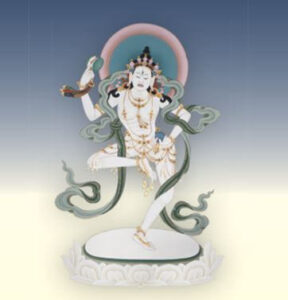
| The following article is from the Summer, 1991 issue of the Snow Lion Newsletter and is for historical reference only. You can see this in context of the original newsletter here. |
Machig Lapdron.
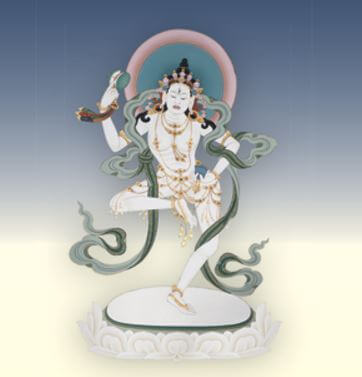
Machig Lapdron popularized and applied Mahayana Buddhism, particularly the Prajna Paramita Sutra, as well as aspects of ancient Bon practices. The drum used in the Chod practice is similar to the drum used by Siberian shamans. It has two sides and two pellets hanging down on either side which strike on opposite sides as the drum is turned, symbolizing the union of opposites. The purpose of the practice is to overcome attachment, with the added benefits of being able to heal the sick, stop epidemics, and become impervious to contagious disease. For example, the practitioners of Chod were called in to handle infectious epidemics, since they did not become infected by the disease.
The Chod practice directly addresses demons, obstacle makers and karmic debtors. When we hear about demons there's a tendency to think, this is a primitive belief which has nothing to do with me. However, as is often the case when Tibetan methods are truly understood, they reveal themselves to be a very sophisticated way of working with energy.
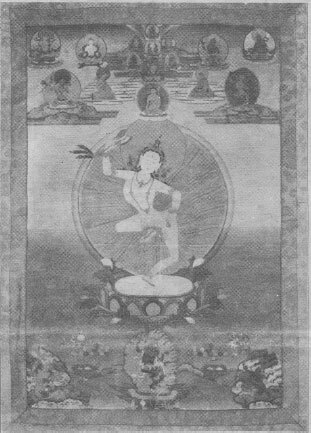
More and more scientific and medical research is proving the concrete effects of negative thought patterns on our health. We all have our personal demons who undermine our positive efforts and wreak havoc in our lives. We have demons that fear success or failure, we have demons telling us we aren't good enough, demons fearing death and sickness, we have the demons of our addictions and obsessions, we have the demons arising from our karmic patterns and early childhood which plague us day and night, not to mention the demons of disease. We have, for example, the demon of attachment who wreaks havoc in relationships. We have the demon of perfectionism who drives us to exhaustion and is still not happy. We have the demon of heroin, cocaine, alcohol, or tobacco who is always on our backs. We have the demon who always is starving, driving us to obesity. The varieties are infinite.
In the Chod the main demons mentioned are the demon of attachment to the body, the demon of death, and the demons of the poisons of passion, aggression and ignorance, the three main manifestations of dualism. Practically everything we do can be reduced to these three basic ploys of the ego. This is what happens: The ego is the central police headquarters which decodes experience into these three categories and then we take the action in response to whether central headquarters decides an object fixation is threatening, enhancing or uninteresting. Thus karma is created. It must be clearly understood that this does not mean that sense experience is demonic; rather, the attachment to the experience which blocks the state of awareness is the demon. When we freeze experience out of fear, this blocks the natural state. Freedom from dualism doesn't mean everything turns into a big mush of oneness. It means that we give up the manipulation of drawing certain experiences towards us and ignoring that which will neither enhance us nor threaten us. Chod is a powerful practice because it makes these responses conscious and leads to a state beyond dualism. Many of the great Dzog Chen practitioners practiced Chod, like Ayu Khadro, who traveled for years practicing Chod in lonely places and cemeteries.
Demons feed on negative thoughts, drain our life force, and come most frequently when we are unaware. A sloppy negative emotional state or simple distraction leaves us wide open for an external demon to attach itself. They begin by planting suggestions in our minds.
For example, the Demon of Abandonment starts suggesting that the person you love is going to leave you, and once that thought takes hold through attachment, the demon gains a foothold and begins to eat and grow stronger. Then the demon suggests that your husband or wife is, perhaps at this very moment, with someone else in bed having a great time!
The demon will start making these suggestions without you even noticing it, then suddenly you start feeling very insecure, and before you know it you can't think about anything else. Then the Abandonment Demon tells you things are going to follow their familiar pattern and you will be abandoned. This is a familiar experience, you've felt it all before. Your fear feeds and strengthens the demon. Sometimes the demon takes over to such an extent that murders are committed. Usually however, we simply become obsessed with jealousy and do crazy things because of it. Or less dramatically the possession of a demon begins very subdy and creates an undercurrent of discomfort or sickness.
From the point of view of Chod all samsaric existence is plagued by demons, and only when we are in state of ngpa are we free from them. The more obsessed we get the more the demon is slurping up the energy. We can have hundreds of demons possessing us at one time, but it all gets back to the basic fixation on dualism. So, here the basic problem is the attachment to the loved one. Where there is attachment, there is inevitably suffering. What we have idealized in the West as romantic love is attachment. This grasping can take many forms possessiveness, jealousy, paranoia, control. It does not lead to happiness, as we would like to believe.
In the Chod we take the demons outside of our body, give them a clear form and feed them whatever they want, and so our life force is no longer drained. We are making them conscious and dealing with them with awareness. When we are in a negative state psychologically everything gets muddled up. This is non-rigpa. Whenever we are in a state of marigpa then negative energies can attach themselves to us which match our energies. It is like fitting a key into a lock. There must be a receptive situation for a disease to embed itself. This can sometimes be the fear of the disease itself. So when our condition is weak or stressed or out of balance, we get sick easily, and we become like a magnet for the demons of sickness or negative spirits.
For this reason it is important to do practice when we are under stress and seek to balance our energy through meditation as soon as possible, because once the negativity gets a foothold it is harder to deal with. Sometimes a small flash or quick uprising of a negative emotion can cause big problems.
In the Chod, one gives one's demons a form and feeds them, so that they do not take over. In the case of the Abandonment Demon, I could see my Abandonment Demon as a little vampire girl with sharp teeth who is hungry for security and interferes in my relationships. The Tobacco Demon might be seen as thin yellow man with an evil face who is lonely and frightened under his seductive veneer. When I see the feeling of the grasping, I see a form. This helps to make things clear. For me this makes Chod something which is really applicable to my life, not just a fascinating foreign ritual.
On the absolute level the benefit of the Chod is the cutting of the very foundation of the self-clinging ego mind pattern which is undermined through the relaxation of dualism practiced in the Chod.
Since in the practice our body has been cut up and has become a substance which fulfills any desires, the demons can eat and eat until they are satisfied. They are fed through visualization. By taking our obsessions and attachments outside of ourselves and seeing their form, they become conscious. It is the unconsciousness that is so destructive. Once we can give something a name and form its power over us is much less, and if we can take it one step further, giving up the struggle and feeding these thought forms what they want, they truly lose their power. This is the relative value of the Chod practice.
The demon is our creation. Its entire existence depends on the amount of energy we feed it. It has no existence outside what we give it. Whenever we disconnect from our awareness, the demons begin to come around. When you are in an alert state, you dance on the demons, they're no longer a problem, the battle is over. Therefore the Yogini is fearless and dances on the heads of the demons. That's why at the beginning of the Chod you invite the Lamas, Yidams, Dakas, Dakinis and Protectors to witness you dancing on the bodies of dualism and attachment to samsara and nirvana. The demon needs a battle in order to have life; through resistance you give it your life force. When you consciously feed the demons in the Chod practice you are taking care of a part of yourself you hate by giving it love and compassion. You let go of the battle.
When we are afraid of a disease we draw it to us, we create a link, we visualize it coming to us. We feed the demon of disease through fear. Elizabeth Kubler-Ross, who works with the dying, says she can often tell what a person will die of, because it's their greatest fear. If I'm terrified of cancer I begin to visualize myself with cancer.
If the demon is fed through the Chod practice, it need not attach itself to our bodies. The monster is going to eat one way or another. If we feed it anger and frustration, it will continue to bother us. If we feed it love and compassion it will evolve. By loving the demon, it melts. The tension is the duality, and pushing the demons away makes more suffering, while pretending they don't exist makes a greater battle. An underground battle can be more insidious than a direct battle. If we can free ourselves of the demons we have fed, we can help others possessed by those demons. We can heal the diseases that we have ourselves experienced.
Before we feed the demons we also feed all the Buddhas, Bodhisattvas, Dakas, Dakinis, and Dharma Protectors, and afterwards we feed those with whom we have karmic debts, those who are making obstacles and all the beings of the six realms. So in a way, the entire phenomenal world has been fed, all attachment has been satisfied, and everyone has everything they want.
Freedom from conflict feels great and also unfamiliar. When I teach Chod and have people visualize feeding their demons whatever they want, invariably the demon disappears once the demon is fed. Then there is a moment of exhilaration followed by a frightened feeling. Who am I without my struggle? In the Chod practice after the offering is complete and everyone is satisfied, we recite a poem about the nature of things as they really are. So that the empty feeling is replaced by the View. The mind is described as being like a mirror, like a clear and cloudless sky, beyond definition and explanation, beyond karma and defilements.
So the temptation to fill in the space created by the absence of the demon is exchanged for an experience of pure, free awareness, the mind as a mirror. Toward the end of the practice it says that demons continue to arise, but self-clinging does not follow and in this way, through love and compassion, the demons evolve. Even though we feed the demons consciously, that doesn't mean they won't come back. Just because we refuse a cigarette once doesn't mean that demon is gone. Eventually, however, through love and compassion, the demons evolve and are liberated. The shadow is brought to light through acceptance. This is real love, accepting the shadow and letting it evolve into something else. The more we deny the shadow the more our lives are ruled by it.
The offering, the offered and offerer are all empty. We are told that from the Dzog Chen view there was never a problem, a problem maker or a solution to the problem. The whole thing is pierced, the bubble of illusion is popped. And at this point you are ready for it, because through the body offering you have let go of everything you are clinging to and can therefore begin to experience what is beyond attachment. The absolute value of the Chod is that it brings to experience what is beyond attachment. The absolute value of the Chod is that it brings us into the moment without correction, to our true condition which is underneath the ego's battle.
Eventually this process ends in the Body of Light. When the transparency of all that arises is seen as Dharmakaya, when it is experienced with this View on all levels, the body of light is a natural outcome. The Body of Light is the ultimate relaxation, it relaxation on a cellular level.
To me the Chod is a great practice for the Kali Yuga, when there are epidemics of all kinds around us. The forces of advertising, television, cinema and society's beliefs lead us toward our demons through fear and attachment. They teach us and our children: this is what you want, this is what you should be afraid of, and these things don't matter. They give us wrong views. Just like the loudspeakers in Tibet which broadcast propaganda day and evening, so too, our lives are surrounded by propaganda which gives us wrong views. The Chod gives us a very powerful way to work with our ourselves. It gives us a concrete tool to deal with our own negativity and a way to help others.
We experienced this very concretely last summer in Bali. At the beginning of the Dakini Retreat someone fell off a ladder backwards onto cement. She had a severe concussion and was unable to get up to go the toilet without nausea. Her back was also damaged. For several days she lay in extreme pain, crying if she had to move. Finally I thought she should go to the hospital, but before going we decided to do the Chod for her.
A group of us who knew the Chod gathered around her and we closed our eyes and did the practice. I saw great streams of demons leaving her and feeding from the skull cup. They were white and smoke-like with sticky fingers. At the end of the practice when we opened our eyes she was sitting up smiling and crying with gratefulness. She was a little stiff still, but she had no trouble walking, and she fully recovered in a few days. This is made possible through the blessings of the Guru Namkhai Norbu Rinpoche and the Lineage from Machig Lapdron, precious mother, who gave these teachings almost a thousand years ago. The profundity and wisdom of the methods is beautiful, and the results are concrete.

